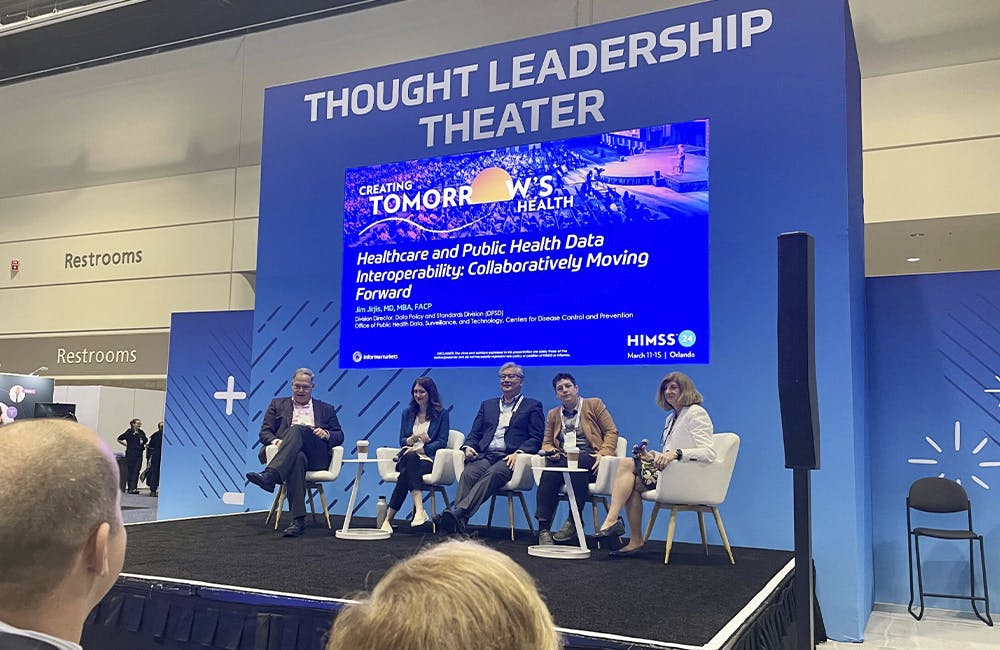Health Experts See Tech Influence for Combatting Other Diseases Amid COVID-19
Global health leaders are calling attention to the world’s other leading infectious diseases like tuberculosis.

As the novel coronavirus spreads rapidly across the world, global health experts are stressing the importance of ensuring testing and treatment for other serious illnesses and diseases aren’t left behind.
The World Health Organization called attention to tuberculosis — the leading deadliest infectious disease in the world, and one of the oldest-known respiratory diseases — during World TB Day Tuesday, in which health experts convened for a webinar to discuss the matter.
“We are still missing a lot of [TB] cases in populations not yet detected and not yet treated, so the mortality rate is high,” stressed Dr. Nhung Nguyen Viet, director of the Vietnam National Lung Hospital.
Although the respiratory disease is preventable and curable, it claims over 4,000 lives every day. It is estimated that approximately 3 million of the 10 million people globally infected with TB are unidentified or unreported. Identifying those missing people by 2022 for TB preventive treatment is, therefore, critical to meeting the worldwide mission of ending TB entirely by 2030.
However, delivering on this commitment may be difficult due to the immediate challenge of COVID-19 in providing the support needed for TB patients, such as disruptions in diagnostic testing supplies and adequate medical attention.
“COVID-19 is a huge threat to the continuation of programs, to the people who are affected by TB, and to the resilience of health systems overall, but we need to wrestle with that threat,” emphasized Peter Sands, executive director of The Global Fund to Fight AIDS, Tuberculosis and Malaria.
“The thing we all need to be working on with urgency is the practicalities on the ground of how we’re delivering a combination of our COVID response and a continued TB programming response,” he added.
For diagnostics testing devices, for instance, there could be increased opportunities for utilizing multi-solution testing devices that could ensure a range of diseases can be quickly found.
Recently, the Food and Drug Administration used emergency use authorization to approve a 45-minute COVID-19 test that runs on Cepheid’s GeneXpert, one of the world’s most commonly used point-of-care diagnostics devices for TB. Currently, there are approximately 23,000 Cepheid systems deployed worldwide, with 5,000 being in the U.S.
Since the system is automated and has been deployed for about a decade, doctors could use it easily to rapidly detect the two diseases, but could also use it to test for other widely prevalent pathogens, like HIV and influenza. Because TB and COVID-19 symptoms are very similar, this could potentially allow for increased TB testing alongside COVID-19, the health experts suggested.
At-home testing kits and treatment methods provided by medical staff could also be beneficial to prevent the spread of the virus and meet people where they are, but the reliability and accuracy of these tests are still being looked into. Making sure tests are easily accessible and scalable for testing large quantities, however, is critical to timely diagnostic efforts. FDA is currently working through an approval pipeline for rapid testing for COVID-19, while WHO recommends using the tuberculin skin test or interferon-gamma release assay for patients with possible TB infections.
In terms of communicating and supporting patients once they’ve been diagnosed, there are a lot of ways digital technology can be used to further meet people where they are and treat them effectively without spreading the viruses at highly frequented health facilities, where other patients could be harmed.
Once patients with TB and COVID-19 are tested, for instance, they could also be assisted through telehealth services, electronic medication monitors and video-supported therapy, as WHO has advised. This could prove even more effective now, since the Department of Health and Human Services and the Centers for Medicare and Medicaid Services have expanded access to telehealth services to treat more patients remotely.
“We are in the year 2020. There is FaceTime. There are a lot of digital technologies … to help communicate with people without asking them to move from one place to another,” emphasized Dr. Lucica Ditiu, executive director of the Stop TB Partnership. “We need to make sure we embrace each other virtually and we stay in solidarity together.”
In addition to supporting innovative technologies and services, the health leaders highlighted how high-political commitment across countries can help garner social mobilization and international support. They also noted the importance of increased advocacy and communication to the public around the health issues at hand.
“Let’s transform our challenges into opportunities,” said Nguyen Viet, in closing, reflecting the general solidarity and optimism of the health leaders. By doing so, the world could better address and overcome the current health battles as well as those ahead.
This is a carousel with manually rotating slides. Use Next and Previous buttons to navigate or jump to a slide with the slide dots
-

CDC Updates Public Health Data Strategy
Accelerating data sharing through capabilities like electronic case reporting make up a large portion of the new two-year plan.
3m read -

How VA is Using Digital Services to Expand Care to Veterans
CIO Kurt DelBene says the the agency’s 2024 priorities included AI adoption, hiring and a better user experience for veterans.
30m listen -

How AI, Digital Transformation in Health Care Compare Around the World
HHS and EU officials contrasted the different frameworks for emerging technology and the challenges that remain.
4m read -

Health Agencies Tout Standards in Data Sharing, Interoperability
Officials from CMS, ONC and HHS spoke about data standards and how to help smaller health organizations make modernization progress.
3m read







